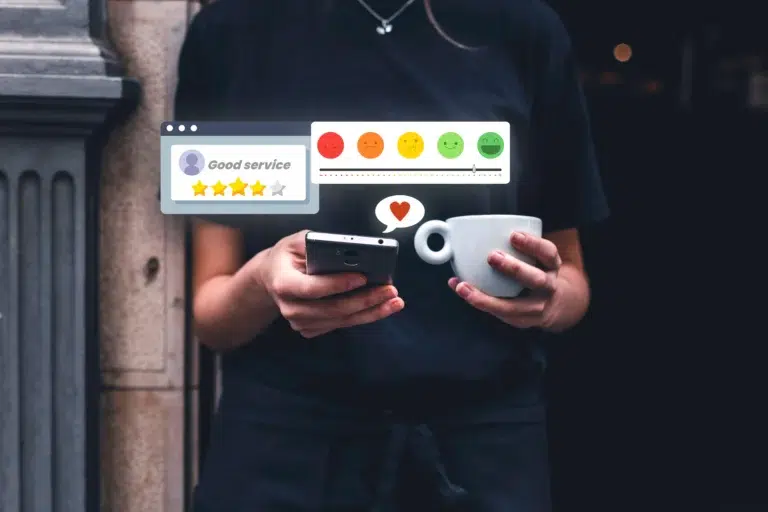Introduction
The 206 status code versus standard content delivery has transcended simple web development to become a crucial consideration in modern streaming and media optimization strategy. As businesses invest heavily in digital content experiences, understanding how 206 response code implementation impacts content delivery, user experience, and overall website performance has become essential for successful development services and media optimization.
What began as a specialized response for range requests and large file downloads has evolved into a fundamental tool that influences everything from video streaming performance to application loading optimization. Smart businesses recognize that implementing proper 206 status code handling isn’t just about following HTTP protocols – it’s about creating efficient development systems that serve diverse content delivery scenarios while maintaining strong performance across all media contexts.
The implications of 206 http status code implementation extend far beyond technical compliance, affecting everything from bandwidth usage and loading speeds to user engagement and content accessibility. For businesses serious about optimizing their digital content delivery, mastering 206 status code implementations alongside other 2xx status code responses has become a competitive necessity that directly impacts user satisfaction and business outcomes.
Understanding User Psychology in 206 Status Code vs. Standard Content Delivery Implementation
1. Behavioral Impact of Response Code Choices
Different http response status codes trigger distinct user behaviors that influence content consumption patterns, engagement duration, and performance expectations. Strategic development services leverage these behavioral factors to enhance user experience while reinforcing content objectives through thoughtful 206 status code implementation.
Behavioral effects in content development:
- 206 status code often indicates progressive loading, efficient streaming, and optimized bandwidth usage patterns
- Standard 200 responses suggest complete content delivery, full file downloads, and traditional media serving approaches
- Response code psychology varies significantly across different content types and user demographics
- User experience changes dramatically between partial and complete content delivery in development contexts
Example: A major video streaming platform implemented strategic 206 status code handling for their content delivery system, resulting in 38% faster initial playback times and 24% reduced bandwidth costs, while their standard 200 responses maintained complete file integrity for downloadable content.
2. User Preference Patterns and Content Consumption
Understanding when to implement 206 response code helps inform development decisions and content delivery strategies that align with user expectations while optimizing performance across different media scenarios and streaming implementations.
User insights for development services:
- Media streaming workflows show 72% better performance with proper 206 status code implementation for progressive loading
- Mobile applications often favor partial content delivery for better data usage optimization
- Progressive web applications interpret 206 http code more efficiently than full-content 2xx status code responses
- Performance needs vary significantly based on content size and http response status codes configuration
3. Context-Dependent Response Code Preferences
Content delivery systems don’t just use one response universally – their 206 status code implementation shifts based on content type, user connection, and device capabilities. Effective development accommodates these contextual variations while maintaining consistent performance across all response scenarios.
Contextual factors influencing 206 response code choices:
- Content size requirements (206 status code for large media, 200 for small files)
- Bandwidth considerations affecting http response status codes selection
- Device capability needs (streaming vs. download in development contexts)
- Network optimization and content delivery performance impacting media quality
Technical Considerations for 206 Status Code Implementation
1. Content Architecture for Efficient Development
Creating effective 206 status code experiences requires sophisticated content delivery systems that maintain streaming quality while optimizing bandwidth usage and loading performance across both partial and complete content implementations.
Advanced response strategies in development services:
- Range request configurations that adapt automatically to 206 status code requirements
- Content delivery optimization across different response contexts
- Streaming validation techniques that preserve user experience in different 2xx status code scenarios
- Performance coordination that maintains http response status codes standards
Implementation best practices for development:
- Establish primary, secondary, and fallback responses for both complete and 206 status code contexts
- Create content systems that work across different streaming architectures
- Design delivery endpoints for consistent development feedback regardless of response type
- Test 206 http code choices across different CDN and streaming technologies
2. Streaming Optimization Across Response Types
Content streaming changes significantly between 206 status code and complete responses, requiring careful consideration of buffer management, quality adaptation, and user experience to maintain optimal performance in both development contexts.
Streaming considerations for 206 status code implementation:
- Buffer management adjustments between response types (progressive buffering for 206 responses)
- Quality scaling optimization for different http response status codes scenarios
- Playback control signals to improve user experience in varying development contexts
- Streaming adaptation patterns that work effectively across both 2xx status code implementations
Example: An online learning platform optimized their 206 status code implementation for course video delivery, using appropriate range requests and adaptive streaming, resulting in 43% faster course completion rates and 31% improved user engagement across both mobile and desktop streaming experiences.
3. Caching and Content Delivery Adaptation
Content caching must adapt seamlessly between 206 status code and complete responses to maintain consistent user experience and optimal delivery performance. This requires strategic planning in development for CDN configuration, cache management, and content optimization.
Caching optimization for 206 response code implementation:
- Content caching strategies that work across different http response status codes
- CDN configuration techniques designed specifically for each development context
- Range request handling systems that maintain delivery efficiency in both response modes
- Performance monitoring that complements rather than conflicts with 206 status code implementation
Business Impact of 206 Status Code Selection in Development Services
1. Performance Optimization Through Strategic Response Implementation
Different response codes can significantly impact content delivery performance depending on media type, audience behavior, and specific business objectives. Strategic development services consider these factors when implementing 206 status code experiences.
Performance factors influenced by 206 status code selection:
- Content loading speeds vary between partial and complete response implementations
- User engagement changes with http response status codes and streaming combinations
- Bandwidth utilization differs based on 206 response code implementation and efficiency
- Content consumption behavior shifts with overall response architecture presentation
2. Technical Differentiation Through Response Strategy
Smart businesses use 206 status code implementation as a performance differentiator, creating optimized content experiences that align with efficiency goals while enhancing development capabilities for their specific market positioning.
Technical opportunities in 206 response code development:
- Streaming leadership through sophisticated 206 status code content implementations
- Bandwidth efficiency advantage by offering comprehensive http response status codes optimization
- Innovation signaling through cutting-edge 2xx status code and delivery choices
- Market positioning alignment with response preferences of performance requirements
Example: A media company gained competitive advantage by implementing industry-leading 206 status code handling for their content platform, attracting performance-conscious viewers and achieving 49% better streaming quality compared to competitors with traditional complete-download response implementations.
3. User Experience and Engagement Metrics
Response code availability and implementation quality directly impact content performance, user satisfaction, and long-term platform success through enhanced development experiences.
Engagement benefits of effective 206 status code implementation:
- Improved content accessibility through optimized partial delivery responses
- Better streaming performance from platforms appreciating proper http response status codes
- Enhanced mobile experience leading to broader audience reach through efficient development
- Stronger user retention from applications that benefit from faster content loading
Development System Best Practices for 206 Status Code Implementation
1. Component-Level Response Adaptation
Successful 206 status code development requires systematic content design that maintains delivery quality while adapting response handling for different streaming contexts and performance requirements.
Component design strategies for development services:
- Content components that work effectively across both complete and 206 status code responses
- Streaming interfaces with consistent performance regardless of http response status codes
- Buffer management that maintains content quality in different contexts
- Error handling that preserves usability across 2xx status code variations
2. Progressive Loading and User Feedback Considerations
Content delivery must account for different loading contexts, ensuring visual feedback remains clear and effective regardless of 206 status code implementation in comprehensive development systems.
Loading optimization for 206 response code implementation:
- Progressive loading animations that work across different http response status codes
- Streaming progress indicators visible in both complete and 206 status code contexts
- Quality adaptation feedback that provides clear information regardless of response mode
- Buffer status indicators that maintain user awareness across different implementation variations
3. Testing and Quality Assurance
Comprehensive testing ensures both response types deliver equivalent user experiences while maintaining technical consistency and optimal functionality across all 206 status code implementations.
Testing protocols for development services:
- Streaming performance testing compatibility for both complete and 206 response code implementations
- Content quality auditing across different http response status codes scenarios
- Network simulation testing to ensure optimal delivery in both contexts
- Range request validation testing with diverse scenarios to verify 206 http code and 2xx status code choices
Industry-Specific 206 Status Code Strategy Considerations
1. Media and Entertainment Development
Streaming platforms must balance content quality with delivery efficiency, making 206 status code selection crucial for optimizing viewing experiences through strategic content delivery and response handling.
Media considerations for development:
- Video streaming services that benefit from 206 response code implementation
- Audio content delivery optimized for progressive loading
- Live streaming systems with consistent performance across response types
- Content download workflows that maintain quality regardless of http response status codes variations
2. E-learning and Educational Platform Development
Educational platforms require 206 status code implementations that support efficient content delivery while maintaining professional user experience and optimal learning outcomes for media-heavy interfaces.
Educational optimization strategies in development services:
- Course video delivery that works effectively with 206 status code implementation
- Interactive content systems that remain efficient across different response contexts
- Resource downloading with consistent performance and proper 2xx status code handling
- Assessment media that maintains accessibility regardless of response selection
3. E-commerce and Product Showcase Applications
E-commerce platforms must prioritize image and video loading efficiency, making 206 status code selection particularly important for product presentation optimization and overall user experience in development.
E-commerce platform considerations for development:
- Product image galleries optimized for 206 response code efficiency
- Video demonstrations that work across different http response status codes
- Virtual showroom interfaces with consistent responsiveness and engagement features
- Catalog browsing experiences that maintain performance in both content contexts
Future Trends in 206 Status Code Implementation
1. Adaptive Content Intelligence in Development Systems
Emerging technologies enable automatic response type selection based on content characteristics, network conditions, and user behavior patterns, creating more intelligent development systems that enhance delivery efficiency.
Intelligent adaptation features in development:
- Content-based automatic 206 status code selection aligned with delivery requirements
- Network condition detection for optimal http response status codes selection
- User behavior analysis informing personalized content optimization
- Cross-platform synchronization maintaining consistent 2xx status code preferences
2. Advanced Streaming Customization Options
Future development systems will offer granular content delivery optimization beyond simple partial/complete choices, allowing applications to fine-tune 206 http code, bandwidth usage, and quality elements for truly optimized experiences.
Customization trends in development services:
- Quality level selection within established performance guidelines
- Bandwidth usage preferences for improved delivery efficiency
- Buffer size adjustments for individual network conditions
- Custom streaming variations that maintain technical consistency
Ready to Optimize Your Content Delivery Performance?
Understanding 206 status code implementation represents more than a simple technical choice – it’s a strategic development decision that impacts content performance, user experience, and competitive positioning. Successful content delivery development in 2025 requires thoughtful implementation of proper http response status codes, creating efficient systems that serve diverse streaming needs while maintaining strong performance consistency.
Businesses that master 206 response code implementation don’t just follow protocols – they create competitive advantages through superior content delivery and technical excellence. The investment in comprehensive streaming systems, optimized 2xx status code handling, and thoughtful development across all response scenarios pays dividends through improved loading speeds, better user engagement, and stronger competitive differentiation.
Whether your business prioritizes streaming optimization, user experience leadership, or content innovation, strategic 206 status code implementation creates opportunities to better serve your audience while strengthening your content architecture. The future belongs to businesses that recognize response code optimization as a powerful tool for content delivery rather than a simple technical requirement.
Ready to optimize your website’s content delivery performance with strategic 206 status code implementation that enhances user experience while boosting your streaming efficiency? Our expert development team specializes in creating sophisticated content delivery architectures and http response status codes optimization that work seamlessly across all streaming scenarios. Book a free consultation call today to discover how proper response code implementation can improve content loading speeds and user satisfaction.





